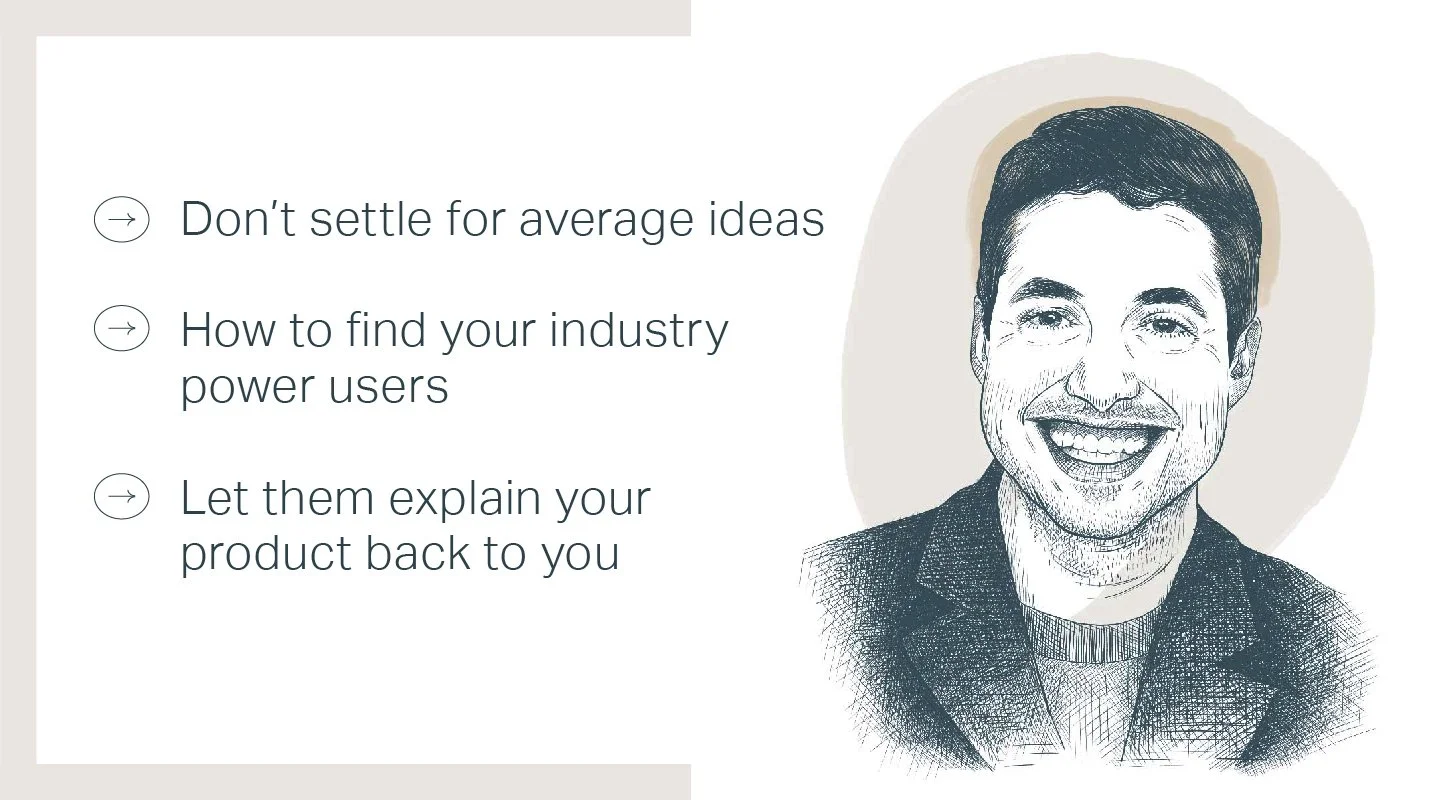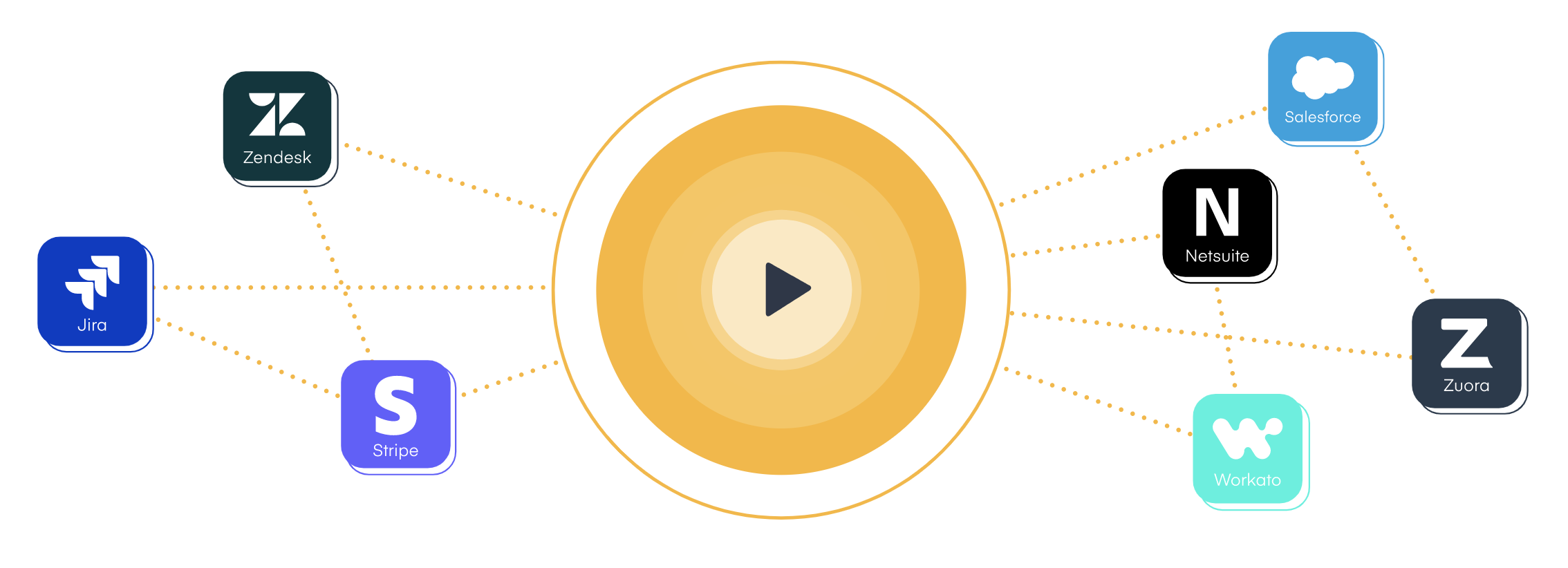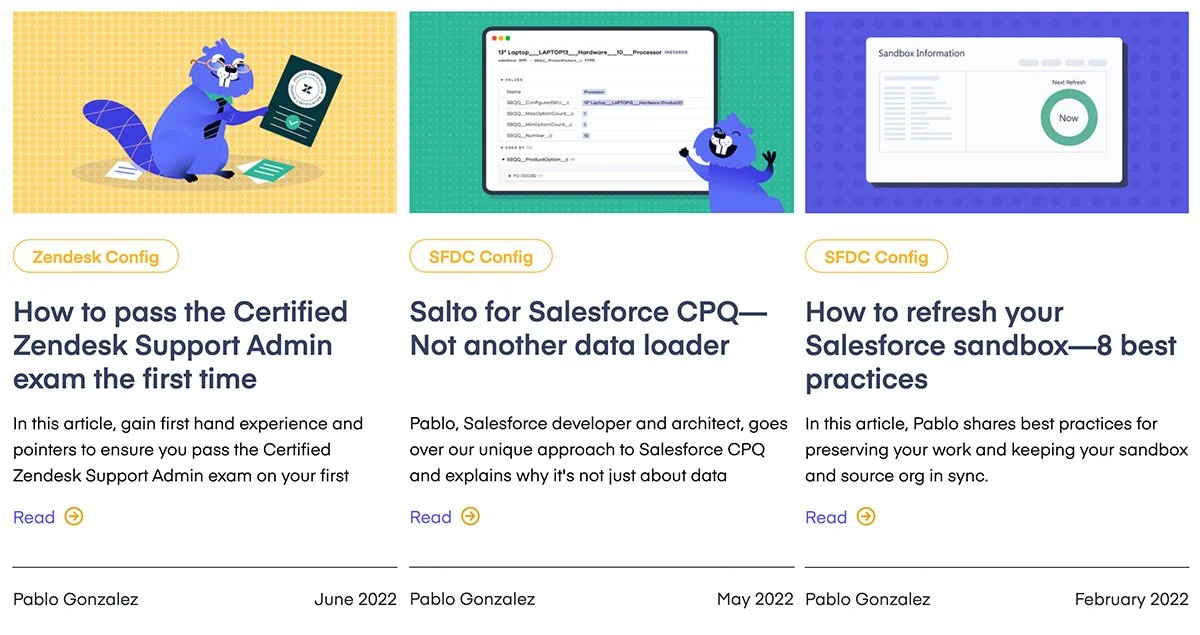Messaging Four Audiences Without Quadrupling Your Workload or Stress—an Interview with Yoni Argaman
Chris Gillespie | July 14, 2022
Eighteen years ago, Yoni was a corporate lawyer busily filing papers for tech companies’ IPOs and thinking how great it’d be on the other side of the table. The speed and complication of starting a business and guiding it through the different phases of growth fascinated him. So he got an MBA. He worked his way up through YAHOO! and Amazon. Now he’s leading marketing at the software startup Salto where he’s gotten all he bargained for—a messaging challenge of staggering complexity.
Because of how their product works, Yoni and his team must address not one market, but four—all at once. And because Salto is still a startup, he doesn’t get four budgets or four teams. (Though this will of course changes as they grow.)
What I think is so fascinating about Yoni’s predicament is that while it seems niche, the lessons are highly generalizable. Issues that are an annoyance to most marketers are, to Salto, a real threat, and that’s forced Yoni and team to innovate in a way we can all learn from.
In this conversation, Yoni talks about how to tailor your approach to multiple markets, how to identify hot “insider” stories, and the incalculable value of having experts do the explaining for you.
Yoni Argaman is VP of Marketing at Salto, a 60-person startup based in Tel Aviv and San Francisco. This conversation has been edited for brevity.
One unified story didn’t win us much business
Yoni Argaman: Product people talk about quickly trying to find product-market fit. Here, we talk about narrative-market fit and channel-market fit. We’re trying hard to understand the stories to tell and the right channels to distribute them in.
In our case, that’s all quite tricky. Our software plugs into a user’s back-office business applications such as Salesforce, NetSuite, Zendesk, and Jira (plus many others, but those are the main four right now) to help them see what exists and make changes. It’s a bit like having a blueprint for your software, only it reveals all the hidden doors, and lets you make changes.
Salto makes it easier to understand and control many different software.
Normally, a startup would begin with one product and one audience, then expand. So that’s what we tried—we tried to sell the cross-application use case to a 'head of business applications' persona. We treated it as one big, combined message. And it really resonated. VPs, C-level executives, investors, and analysts loved hearing about the need to connect these systems. But it never really translated directly into business.
The reason was, there’d be a second conversation. Those executives would excitedly introduce us to their Salesforce lead or NetSuite developer, and these people weren’t necessarily interested in the cross-application use case. They each lived within one application, so to speak, and wanted to hear about what we could do in that singular system.
Our takeaway was that application-specific teams needed application-specific stories.
So we decided we needed a different story for each audience
Yoni: When you really get into it, each of these application ecosystems—Salesforce, NetSuite, Zendesk, and Jira—is really its own separate world. From the outside, we see similarities, but inside, they only see differences. People who specialize in each software use different terms and thought frameworks. They have different, mutually unintelligible pains.
In Salesforce, you call something an “org” whereas in Zendesk, it’s an “instance.” And if you talk about struggling to push changes from your sandbox into your production environment, Zendesk people light up in agreement, whereas Salesforce people don’t know what you’re talking about.
These are sophisticated audiences who expect true, frontier knowledge. They want genuine best practices that apply very specifically to them. An outsider can’t just come knocking. We decided we needed to have four different go-to-market strategies and plans that could each operate somewhat independently. And we’d have to “package” the narrative for each audience. Once we established traction in those four, and figured out those motions, we’d be able to open all other markets that followed with a lot less effort.
But the question was, how could we start doing all that with just us?
Let each market tell you what it needs
Yoni: So back to the idea of identifying the right messages and the right channels without a lot of resources. It was clear we’d need to enlist the help of a few different categories of experts. We’d need super users in each ecosystem to help us define the narrative, and evangelists to help us distribute it.
That meant asking ourselves:
How do we identify the right influencers in those communities?
How do we get them excited about the product?
How do we gather the material to tell sophisticated stories?
How do we distribute those stories?
What works well enough to turn into a campaign?
The answer to most of those questions is to try a lot of things. By posting, watching, and writing articles, we learned that some communities are more sophisticated than others. In one, we had lots of direct content competitors, whereas in another, the competition was less active. That guided our approach.
In the most competitive ecosystem, we led by talking about the free tier of our product so we could help without selling. Our launch hit 300 percent of goal, and we traced much of it back to a Reddit post and one article on a super-popular niche blog. Those mentions had far more measurable impact than any of our paid campaigns or bylines in VentureBeat or InfoWorld. (Which, of course, also serve a different purpose.)
"Our launch hit 300 percent of goal, and we traced much of it back to a Reddit post and one article on a super-popular niche blog."
Things really took off when we hired a true Salesforce expert with more than 12 years of experience. He’d actually built his own free product to fix one of the same problems we address, so we knew he got what we were doing. He’s also one of those rare individuals who knows it all, but can also explain it. He’s a power user, but also an evangelist.
When he joined us, he produced a string of articles and videos that we never would have thought to write—all inside-baseball stories—that his followers commented on and shared.
That expert wrote a series of real “inside-baseball” stories we wouldn’t have thought to write.
In one of the four communities, we found that the pool of prospects was relatively small, and our competitors weren’t all that active. We learned that if we simply told people what we did and how it addressed their pains, they tended to want to see a demo. There wasn’t as much need for content. After distributing one very pointed asset about a particularly painful use case in the largest Slack community, we found that account-based outreach via LinkedIn worked great.
By trying, publishing, and listening, each market started to tell us what it wanted, and we developed a marketing and product strategy unique to each.
Appoint market-message tiger teams
Yoni: My advice would be to work the hardest at identifying your two classes of expert (whether internal or external) and build a content operation around them. Create a pod for each market that consists of a product marketer, a product person, and a power user, and have them build what we call a “messaging house” where you document your richest, inside-baseball information.
I really believe in letting the customer or “power user” tell the story. We let them describe our product back to us, and explain the pain it solves for them completely in their own words.
Rich information is key. Many people fall into the trap of generating lots of high-level content that checks the boxes, but lacks specificity. We’ve found the general stuff tends not to spread, and that’s why we’ve gone through so much effort to build a scalable operation for identifying good information.
"Many people fall into the trap of generating lots of high-level content that checks the boxes, but lacks in specificity."
If you aren’t sure where to find the experts in your field, go to the communities, find out who writes things that everyone reads and responds to, and invite them to participate in an interview series. (We call ours “System Thinkers.”) It’s good for their career, it’s useful to your audience, and it helps you build and test a relationship.
Then, bring in talented writers and designers, and growth marketers to think about SEO and backlinks and how to chop up every piece of content so it lives multiple lives. We’ve found “how to” videos particularly versatile—you can post them to social, add them to blog posts, and create an “answer library.” Specific, credible, reusable content like this is how you truly grow long term. Anyone can publish a handful of good articles. Only teams with a repeatable system can do it 15-20 times—and that’s where you finally begin to get traction.
"Anyone can publish a handful of good articles. Only teams with a repeatable system can do it 15-20 times."
Want more messaging advice from Yoni? Follow him on LinkedIn.
He also recommends three books: Content Inc., Obviously Awesome, and Ogilvy on Advertising.
Want to keep in touch? We publish a twice-monthly newsletter about writing craft.





